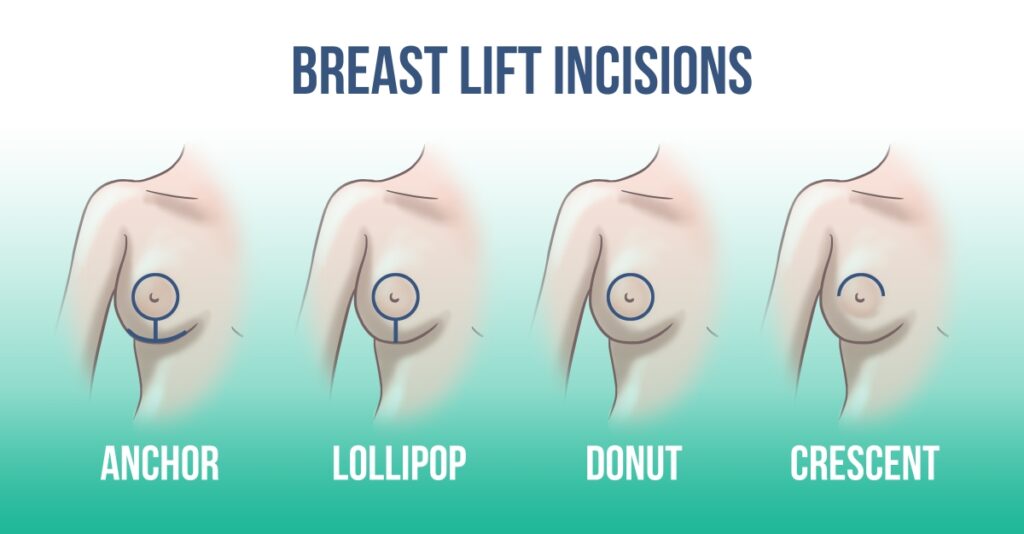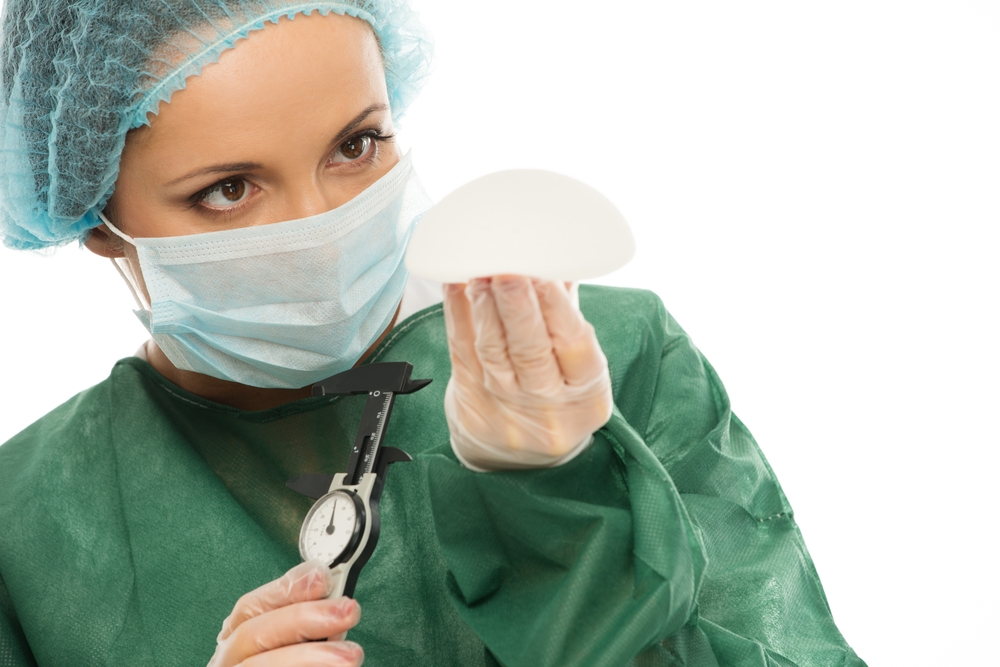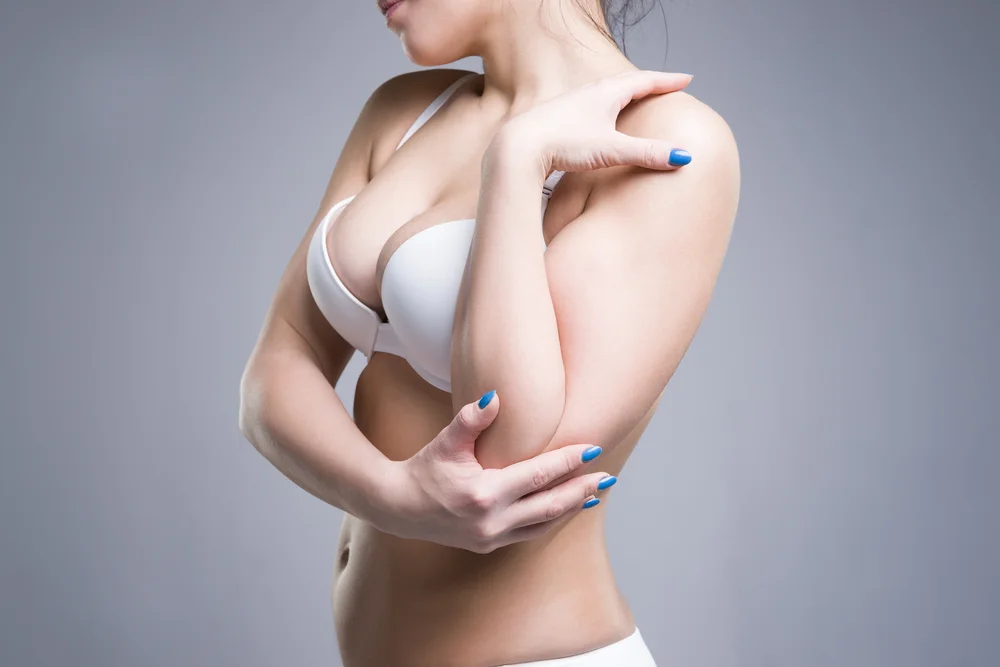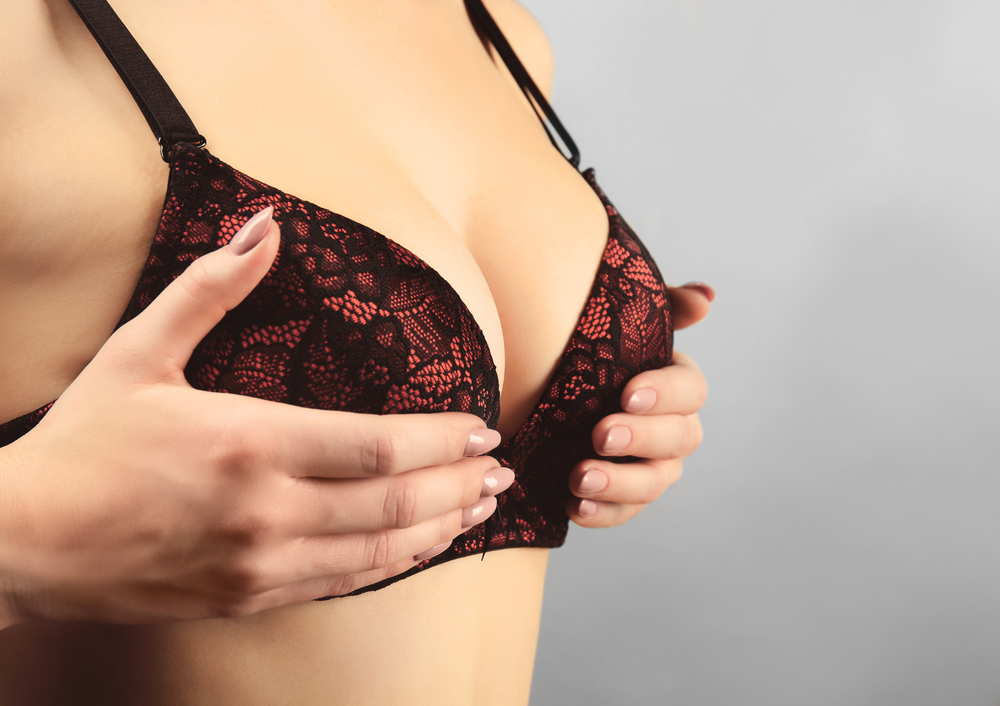The relentless march of time paired with gravity’s unyielding pull casts a shadow over the beauty of breasts, presenting a challenge many women wish to overcome.
As years pass, the once youthful elasticity of breast tissue diminishes, leading to stretching and a downward journey known as breast ptosis, more commonly referred to as breast sagging. For those aiming to reclaim the breasts’ former glory, breast enhancement through procedures like breast lift surgery emerges as a beacon of hope.
But what of those hesitant to embrace surgical intervention? Are gentler, less invasive paths available?
Indeed, the realm of non-surgical options extends its hand, albeit with a cautious whisper of realism. Among these, a treatment named ThermiBreast stands out, offering a modest uplift for certain candidates, though experts caution against expecting miracles.
Navigating the Waters of Non-Surgical Breast Lifts: Marketing Versus Science
The landscape of non-surgical breast lift solutions is mired in promises often unmet, with loud marketing drowning out the sobering realities. “A deluge of hype overshadows scant evidence,” observes Dr. Greg Buford, a plastic surgeon from Englewood, CO, underscoring the chasm between advertisement and efficacy.
Dr. Robert N. Young, a seasoned plastic surgeon in San Antonio, echoes this sentiment. Despite advancements in radiofrequency, fat transfer, and stem cell therapies, these technologies fall short of delivering significant lift, especially for those with pronounced sagging due to aging or childbearing.
The quest for non-surgical remedies that can adequately address moderate to significant sagging continues, as current methods offer but a modest elevation. “Achieving the ideal restoration for women experiencing substantial breast sagging remains elusive,” notes Young, highlighting the inherent limitations of existing techniques.
The heart of the issue lies not in muscular weakness but in the gradual stretching and weakening of Cooper’s Ligaments, leading to sagging. “Future strategies must aim at reinforcing these structural supports to offer a true non-surgical lift,” Dr. Buford points out, indicating the direction for future innovation.
While some treatments may induce temporary swelling for a perceived, slight elevation, most alternatives focus solely on skin treatment, insufficient for addressing significant sagging, explains Dr. Suzanne Trott, a Beverly Hills-based plastic surgeon.
Buford further warns that a majority of non-surgical breast lift treatments are offered by practitioners outside of plastic surgery, lacking critical anatomical knowledge essential for effective breast lifting.
The Reality of Non-Surgical Breast Lift Alternatives
Our panel of experts demystifies the array of so-called “alternatives” to traditional breast lifts, shedding light on the reasons behind their limited effectiveness.
Exploring Laser Treatments for Breast Lift
The concept of a “laser breast lift” often centers around the Coolbeam laser, a technique that purports to offer a non-surgical lift by removing a thin layer of skin, ostensibly tightening the area. The effectiveness of such treatments, however, remains a topic of debate among professionals.
Experts like Buford challenge the efficacy of lasers in providing true breast lift benefits, citing a lack of substantial results. Trott concurs, highlighting that while lasers aim to promote collagen formation through skin injury, the outcomes have not proven to be enduring. Moreover, potential side effects such as pain, burns, and hyperpigmentation, especially in darker skin tones, further complicate their viability.
Thermage: A Closer Look
Thermage, utilizing radiofrequency (RF) energy to enhance skin collagen, is sometimes mentioned as a non-surgical alternative to breast lifts. Despite its promotion, Buford notes an absence of significant outcomes from this method. Trott adds that Thermage, an older technology, has fallen out of favor due to its discomfort and questionable efficacy.
The Botox Breast Lift Myth
The notion of a “Botox breast lift” suggests that Botox could mimic its facial effects on the breasts, aiming for a lifting and tightening outcome. However, Trott clarifies that Botox, being a muscle relaxant, could not feasibly provide a lifting effect by weakening the pectoralis muscle. Buford further dismisses this approach as overly hyped, emphasizing that muscles play no part in breast sagging, and thus, Botox injections are unlikely to offer any lifting benefit.
The Truth About Breast Exercises
Contrary to popular belief, “exercising” your breasts into a lifted state is a myth. As Trott explains, working out the pectoralis major muscles might enhance the chest’s overall appearance but won’t directly lift the breasts. Skin and soft tissue’s elasticity and firmness cannot be improved through exercise alone, emphasizing the limitations of physical workouts in altering breast position.
Unveiling the Vampire Breast Lift
The Vampire Breast Lift, surrounded by intrigue and promise, claims to employ microneedling and platelet-rich plasma (PRP) for breast lifting. However, experts clarify that while it may rejuvenate the skin, it falls short of actually lifting the breast tissue. Trott notes its benefits are mainly skin deep. Buford critically views it as the epitome of over-hyped procedures, cautioning against its lofty claims and premature results attributed to mere swelling rather than genuine improvement.
The Reality of Breast Lift Creams
Amidst a sea of topical creams boasting breast lifting capabilities, the effectiveness of such products remains questionable. These creams may offer a momentary sensation of tightness, yet lack any long-term lifting impact. Buford points out that many such creams contain estrogen or similar components, which have negligible effects on genuinely lifting or firming breast tissue.
In the quest for a Breast Lift Without Surgery, it becomes clear that while options like breast enlargement creams may offer subtle enhancements, they cannot replicate the results of more invasive procedures. Understanding the limitations and realistic outcomes of non-surgical alternatives is crucial for setting appropriate expectations.
Exploring Effective Non-Surgical Alternatives
While the quest for effective non-surgical breast lifts continues, the consensus is clear: these methods cannot rival the transformative power of surgery. Trott mentions a temporary solution involving sterile saline injections, offering a fleeting enhancement for an evening. Known colloquially as the “lunchtime boob job,” this procedure’s costliness hardly justifies its short-lived benefits.
ThermiBreast emerges as a modestly effective technique for selected cases, with Young and Buford acknowledging its potential for slight improvements. However, its suitability is limited to those with minimal sagging, and the procedure’s cost approaches that of traditional surgery, limiting its appeal.
Despite ThermiBreast’s nuanced success, Trott remains unconvinced of its value, citing temporary swelling as the primary outcome rather than genuine, lasting lift.
Anticipating Advances in Non-Surgical Lifts
The current landscape for non-surgical breast lifting might be underwhelming, but the future holds promise. Innovations in fat transfer and stem cell therapies hint at potential advancements. Young remains optimistic about these emerging techniques, although acknowledging their current limitations compared to tried-and-true surgical methods.
Buford shares this optimism, foreseeing a time when non-surgical options could fulfill their promise with technology’s aid. Yet, for the moment, the recommendation leans heavily towards surgical intervention for those seeking significant, reliable results.
As the field evolves, the possibility of achieving a breast lift without surgery grows closer, yet it’s crucial to approach current offerings with a critical eye and realistic expectations.
Understanding Your Breast Lift Options
Insights from Dr. Robert N. Young, MD, FACS, a renowned board-certified Plastic Surgeon,
Diving into the spectrum of breast lift options reveals a landscape filled with both surgical marvels and non-surgical endeavors striving for efficacy. Patients dream of the ideal lift devoid of surgical intervention, yet navigating through the myriad of available choices demands discernment.
This comprehensive overview sheds light on the various surgical techniques tailored to address differing degrees of sagging and aesthetic goals, alongside exploring the burgeoning field of non-surgical alternatives. With an emphasis on realistic outcomes and informed decisions, the journey towards an uplifted silhouette begins with understanding the nuances of each available path.
Breast Lift Procedures: Know Your Options
By Dr. Robert N. Young, MD, FACS, board-certified Plastic Surgeon
My patients would all love to achieve the ideal lift without having to undergo surgery or expensive procedures, and no one wants to be disappointed with something that doesn’t work.
Here is a rundown of your options — both surgical and non-surgical– as well as some outdated methods that have been widely discredited.
How breast lift surgery is performed
Traditional breast lift surgery, also known as mastopexy, typically involves the removal of excess skin. The remaining tissue is then pulled together and sutured. This process tightens the breast, raising and lifting it at the same time.
There are several types of breast lift available, depending upon the amount of sagging, nipple position, and skin laxity.
Crescent lift (crescent wedge) – Incisions are made around the top of the areola only. This technique is used to address minimal breast sagging, and is sometimes combined with breast augmentation when the patient desires a perkier look than can be accomplished through breast lift surgery alone. Scars are well-hidden, and once healed they are often unnoticeable.
Areolar lift (donut lift or circumareolar lift) – Incisions are made all the way around the areola. This is a minimal breast lift which is designed to address mild sagging. It is sometimes combined with breast augmentation, and can be performed when the woman wants to reduce the size of the areolas or correct nipple asymmetry. Scars are well-hidden along the edges of the areola.
Vertical breast lift (lollipop lift) – Incisions are performed around the breast areola, with a vertical incision that runs down to the inframammary fold, creating what looks like a lollipop. This type of lift is designed to tighten and lift the breast. It can be performed to reshape the entire breast, and produces a moderate amount of scarring.
Anchor lift (inverted T-LIFT or full breast lift) – Incisions are made around the areola, vertically down to the crease, and horizontally out along the crease on both sides. This lift is often recommended for women with significant sagging, or for those who also need to reduce the size of the breast. Of all techniques, the Anchor Lift provides the most tightening, reshaping and lifting. While it does cause scarring, this generally fades over time.

The pros and cons of mastopexy
The benefits of breast lift surgery are that the results are instant and can last years. Breast lift surgery can improve many things women are unhappy with, including breast deflation, sagging, size, shape, asymmetry, and irregularities.
With any of the techniques previously described, the nipple and areola can be repositioned to provide a more youthful appearance. Large areolas can also be reduced if the patient desires, and irregularities such as inverted nipples can be successfully addressed.
Once the excess skin has been removed, the breasts appear perkier while still maintaining a natural look and feel. Breast implant can also be added to provide additional volume.
While many women are fearful of scarring, which can be quite noticeable immediately after surgery, scars diminish over the first year, often to a point where they are no longer noticeable. Newer technologies such as the use of silicone gel sheets and scar gels and creams, while somewhat costly, can help scars heal faster.
Non-surgical options: Don’t expect miracles
At this time, non-surgical breast lift procedures do not perform as well as traditional surgery. While science is making big improvements through the use of radiofrequency, fat transfer, and stem cell therapies, we have not yet reached the same degree of effectiveness in providing significant lift.
For decades, breast exercises, suction devices, nutritional supplements, and breast creams were the only non-surgical alternatives offered. These alternatives still exist today and include an overwhelming array of bras, sleepwear, pads, straps, creams, lotions, gels, and exercise programs that promise miraculous results.
Most women who have tried them have been disappointed and eventually turn to surgery. Others try one of the newer non-surgical technologies — laser, radiofrequency, fat transfer, stem cell injections, and even Botox are now being publicized as non-surgical alternatives to breast lift surgery. But do they work?
My own San Antonio AAAASF Certified Surgery Center is used for all breast lift surgeries I perform. While the majority of my patients elect to undergo traditional breast lift surgery, I also offer fat transfer for breast augmentation when implants are not desired, or when a lift and more upper pole fullness is needed.
I also offer ThermiBreast for women who are good candidates and need a minimal amount of lift. This is the main drawback with ThermiBreast: the procedure is best suited for women with Grade 1 (mild) ptosis — most women need more lift than this.
ThermiBreast uses controlled radiofrequency to generate heat, which contracts the tissue and causes tightening. A small thin probe is inserted under the skin while the patient is under local anesthesia. The probe is carefully monitored by the surgeon until it reaches a precise, optimal temperature. The probe is then moved in a pattern to cover the entire breast area.
ThermiBreast is usually done in one session, and requires little downtime. However, some patients may have difficulty tolerating the procedure under local anesthesia alone. Early results have shown that it results in approximately 1 inch of lifting. The cost of ThermiBreast is usually just slightly less than surgical breast lift procedures.
New methods are being introduced all the time, and have been for many years. Over the years surgeons have tried many surgical procedures to improve breast lift, including internal bras (slings made from tissue or mesh), anchoring the breast from above, and other methods which have not been terribly effective.
Most recently, the so-called Laser Breast Lift, Botox Boob Job, and Vampire Breast Lift have been marketed as alternatives, but their effectiveness and longevity remain unproven. Time will tell the effectiveness and safety of these fads. For now, none of these techniques can rival the results of breast lift surgery performed by an experienced plastic surgeon.
Dr. Robert N. Young is a Board Certified Plastic Surgeon with a successful San Antonio practice. Having performed over 10,000 breast enhancement surgeries, he is widely referred to as “The Breast Doctor” of San Antonio. For over 25 years, Young has been a leader in minimally invasive breast augmentation techniques.









